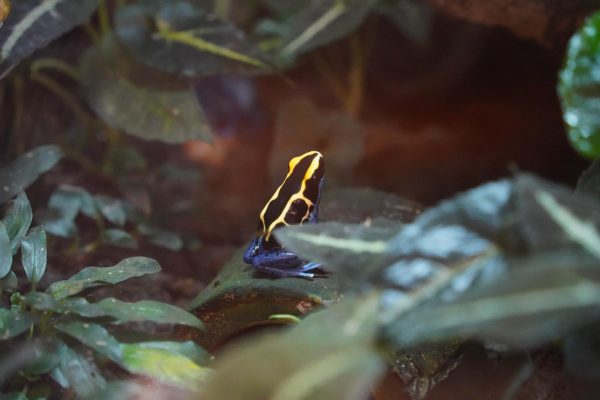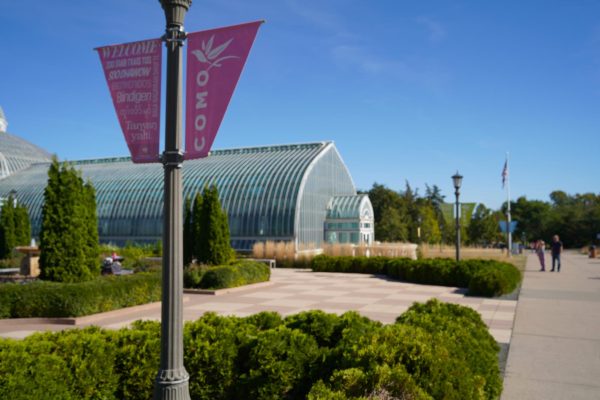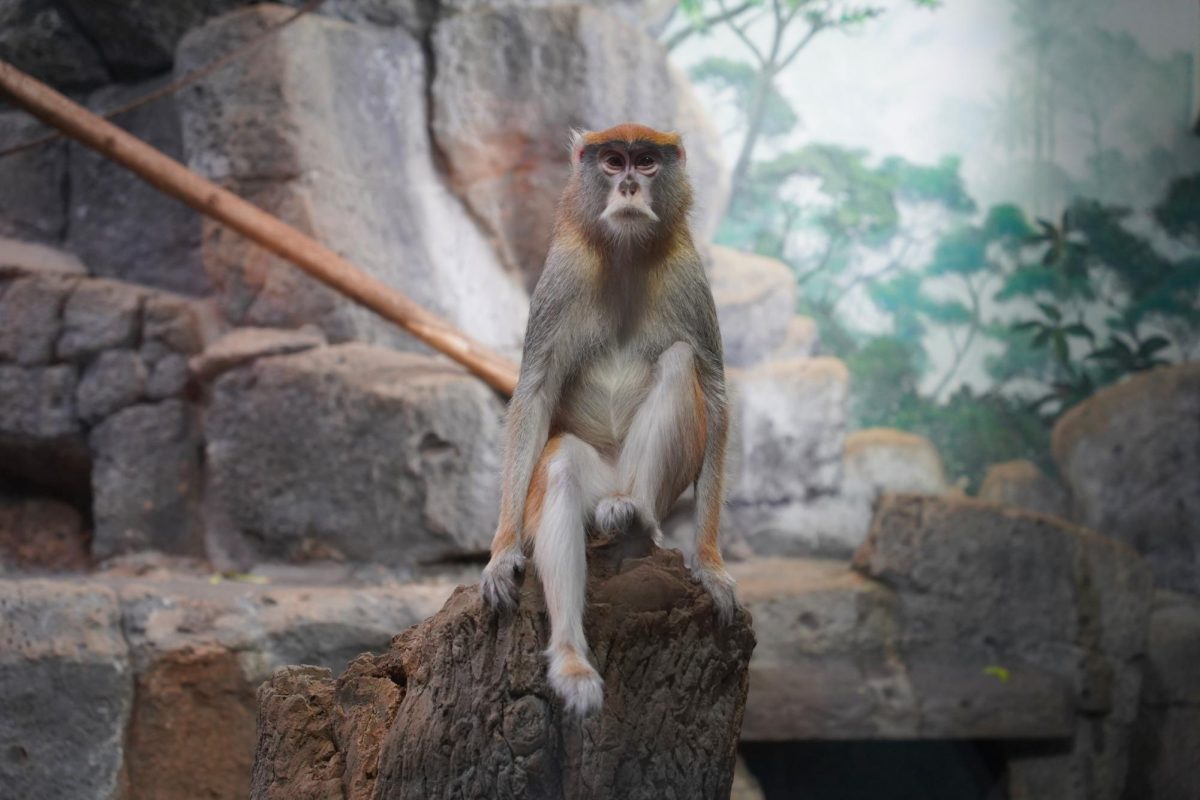The 127-year-old Como Park Zoo and Conservatory keeps visitors coming with new baby animals and changes to the zoo.
The zoo, which is free to the public and features many species of plants and animals, recently welcomed two tiger cubs for the first time in over 40 years in addition to a baby Nyala, said Matt Reinartz, Como Park Zoo and Conservatory public relations manager.
Meanwhile, the conservatory will be temporarily closing the Sunken Garden room after the end of the Fall Flower Show to build ramps for increased accessibility.
Como Zoo’s most recent additions are a baby Nyala, which is a type of antelope, and a pair of tiger cubs.
These additions are in large part thanks to the zoo’s accreditation by the Association of Zoos and Aquariums and participation in the Species Survival Plan. This network allows the Como Zoo to trade animals to other zoos and vice versa to ensure the animals retain a strong genetic line, Reinartz said.
Animals born at the zoo through this network are usually traded to another zoo to continue to make a strong genetic line but remain property of Como Zoo, Reinartz said.
“We just had a baby Nyala,” Reinartz said. “That baby will probably leave to another zoo within a year.”
The new pair of Amur tiger cubs were born at the zoo for the first time in over 40 years in September, Reinartz said.
“We’re lucky this time that it happened,” Reinartz said. “It was exciting to have baby tigers here.”
Reinartz said it took so long for new cubs to be born because sometimes the animals do not hit it off with their match.
“Sometimes the animals, they just don’t like each other,” Reinartz said. “Like the tigers, they’re kind of a solitary animal except when they’re ready to breed. Then they do their thing and then they separate for a long time.”
The Como Zoo’s Conservatory consists of different themed rooms, including the famous Sunken Garden room, Reinartz said. The room is home to five flower shows each year, but this year there will be no holiday flower show for the first time in almost 100 years.
However, accessibility issues mandate repairs and design changes. The Sunken Garden room will be closed from Nov. 17 until Jan. 11, 2025, to replace the stairs and broken chair lifts with ramps, Reinartz said.
Besides the flower shows, the Sunken Garden also hosts Music Under Glass, a concert series on evenings in January and February, Reinartz added. The music is played throughout all the gardens at Como to create an immersive experience for guests, Reinartz said.
“To be in here when it’s dark outside and light in here, it’s unbelievable,” Reinartz said.
The conservatory is home to more than just plants. Near the gift shop by the entrance to the Conservatory, there is an exhibit with tiny Panamanian frogs and Wyoming toads, Reinartz said.

“Just little nooks and crannies in Como, you’ll find some really cool stuff,” Reinartz said. “I’m trying to get people to get in here and see these cool things.”
Reinartz added that Chloe, the two-toed sloth with her own Facebook fan page who lives in a tree in the Tropical Encounters building, is a must-see.
“This is our most famous resident,” Reinartz said. “They put her up in this tree, she goes up and at night they bring her down and put her back in her bedroom.”
How the zoo and conservatory came to be
Como Park Zoo and Conservatory Director Michelle Furrer said Como Park was originally created as a natural space for St. Paul residents in the 1870s. Furrer said the founder of Como Zoo had a love for plants and wanted a public park for them.
“The park superintendent really had this love and history for tropical plants and then campaigned to get a hothouse that eventually became the Conservatory,” Furrer said.

What was initially just supposed to be a park with many diverse plants changed when St. Paul donated three deer to the park, Furrer said. This prompted them to host animals and eventually become a zoo. The former Minnesota lieutenant governor donated a bison and a citizen donated a bear in 1926, Furrer added.
Furrer said early on in the park’s existence, the city considered shutting down the park. Without the community lobbying around the park, there was a chance the zoo would not have come to be, Furrer added.
“There was a time when the city actually said maybe we should look at closing the zoo and a citizen group formed and said no but let’s make sure that we can maintain it and make sure that it’s free and accessible for generations to come,” Furrer said. “That was sort of this really big turning point.”
Furrer said after the park superintendent raised around $50,000, the funds were used to build the now-historic glass dome Conservatory in 1915.
By the 1970s, Como Park Zoo and Conservatory became a part of the regional parks system which helped them receive funding and expand the space, Furrer said. Over time, spaces such as the primates building, large cat exhibit, the seal harbor, gorilla forest and tropical encounters spaces were added.
Furrer said during this time, multiple volunteer groups helped maintain the zoo and conservatory and by 2000, they all merged under the city’s Parks and Recreations Board. Furrer said though the zoo was not part of the original plan, Como Park is better because of it.
“We’ve also learned so much more about animal care and welfare that as you look at the immersive experiences that are not better just for the guest experience, they’re really better for the animals and the habitats,” Furrer said.
University student Abigail Voigt said that though she grew up in Wisconsin, she feels she has a strong connection to the Como Zoo because of her visits there with her family who live locally.
“Como Zoo is actually kind of a big part of my life,” Voigt said. “I’ve been going there since I was little.”
Voigt said for her and her family, Como Zoo has always been a perfect place to visit because of its free admission and various exhibits and activities.
“One of our big things that we did every time was we would take a picture with the turtle statue they have,” Voigt said. “I have like a collection of those photos, like I can kind of see how I grew up through those photos.”
Furrer said Como Park is accredited in the top 10% of zoos in the U. S. with the Association of Zoos and Aquarium for their quality and presentation.
Furrer said during the 1960s, there was talk about closing Como Park Zoo and Conservatory in favor of having only a state-operated zoo. However, the St. Paul community pushed back against this idea.
“The citizens of St. Paul really didn’t like that idea,” Furrer said. “They love the idea of having a zoo in their neighborhood and so at that time was when the master plan was developed to continue to operate both.”
Furrer said because the Zoo and Conservatory have been around for multiple generations, the community feels that the zoo is part of their history. Furrer said Como Park sees around two million visitors a year, proving how important and needed this space is locally.
“As we see our visitorship and the urban kind of landscape change is so important to have a place where people can connect with nature,” Furrer said. “If that’s just being out in open spaces, if it’s connecting with the plants or connecting with the animals, it’s a part of our own welfare.”
Looking toward the future
Furrer said as the community around Como Park changes, the Zoo and Conservatory are adapting to it. Furrer said they are always thinking about how to better maintain and preserve the area for the next generations.
“We are continuously investing to make sure that we are here for our grandchildren and great-grandchildren and so on,” Furrer said.
Furrer said it is difficult to pick a favorite part about the Zoo and Conservatory, even after working there for 18 years. But Furrer said seeing and hearing how amazed guests are about nature and animals will never grow old for her.
“It’s that connection and that experience and that wow factor that people have. When you can actually see that happen,” Furrer said. “That’s my favorite part.”










Ken DeYoe
Oct 11, 2024 at 5:19 pm
Como Zoo is awesome!!! Accessibility improvements are a must and more awesomeness!!! Gotta go see Chloe the sloth and Toby the turtle!!
Glad to see Alexandra DeYoe’s brother on the articles’ opening picture!!!